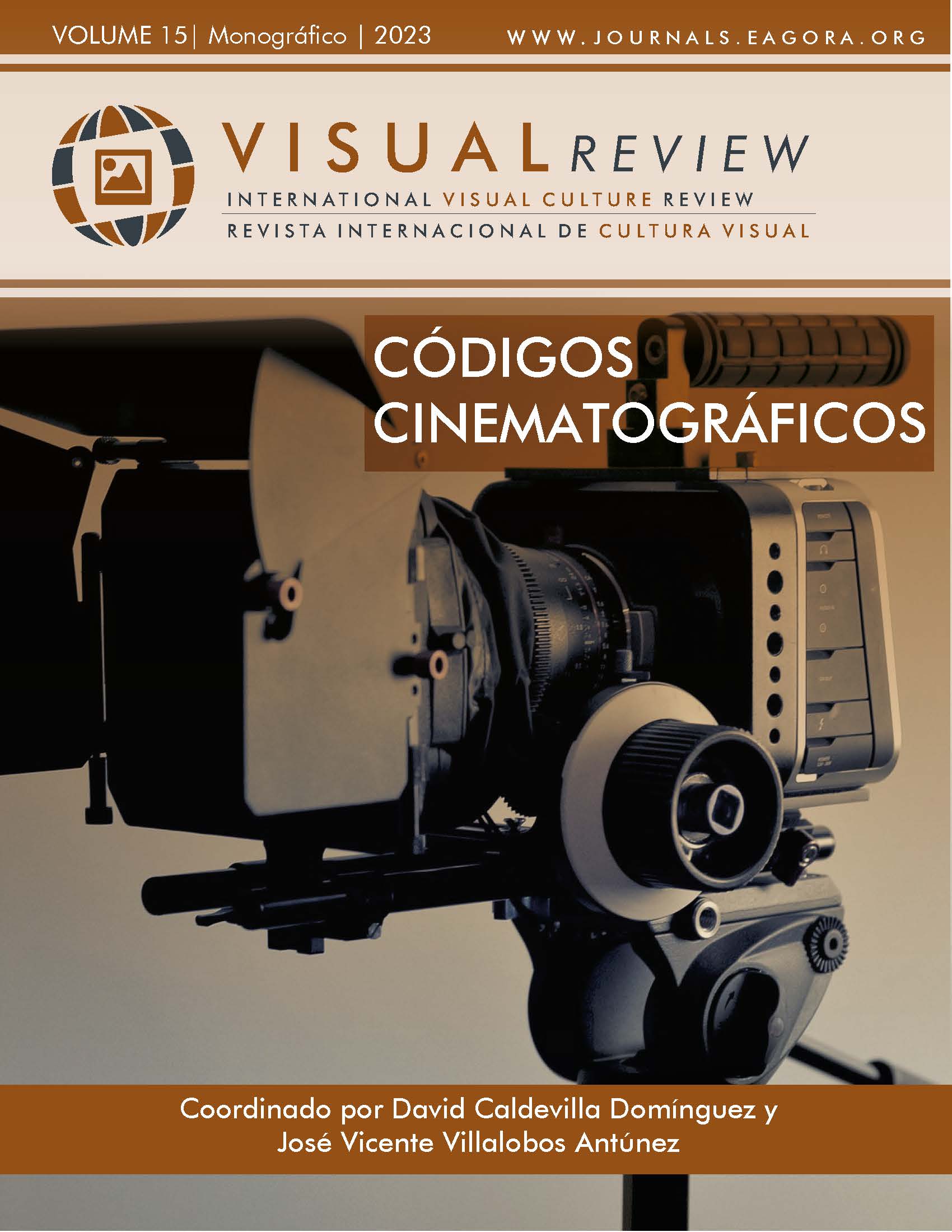New Japanese narratives and the disarticulation of male hegemony
Discursive diversification through the hybridization of genres in contemporary manga
DOI:
https://doi.org/10.37467/revvisual.v15.4959Keywords:
Manga, Hybridization, Genres, Japan, Masculine hegemonies, Discourse, ComicAbstract
Manga has established itself as one of the world's most profitable publishing industries, becoming a major artistic movement of the 21st century whose influence has permeated other media such as film, music, video games and fashion. This article attempts to identify the existence of a general semantics in manga narrative, as well as its industrial influence. This leads us to predict the disappearance of its commercial genres due to a process of hybridization that is occurring in contemporary productions, implying the dismantling of the male hegemony rooted in it for decades.
Downloads
Global Statistics ℹ️
|
927
Views
|
682
Downloads
|
|
1609
Total
|
|
References
Bakhtin, M. (1981). The Dialogic Imagination: Four Essays. The University of Texas Press.
Berndt, J. (2016a). Introduction: Manga Beyond Critique? Kritika Kultura, (26), 166–178. https://doi.org/10.13185//KK2016.02610 DOI: https://doi.org/10.13185//KK2016.02610
Berndt, J. (2016b). Manga, which manga? Publication formats, genres, users. In A. Targowski, J. Abe & H. Kato (Edits.) Japanese Civilization in the 21st Century, (121-133). Nova Science Publishers. https://bit.ly/3YJXY9l
Bouissou, J. M. (2010). Manga: A Historical Overview. In T. Johnson-Woods (Ed.), Manga. An anthology of global and cultural perspectives, (17-33). The Continuum International Publishing Group Inc. https://bit.ly/3YZsrA2
Bouissou J. M., Pelliteri, M., Dolle-Winkauff, B. & Beldi, A. (2010). Manga in Europe: A short stody of market and Fandom. In T. Johnson-Woods (Ed.), Manga. An anthology of Global and Cultural Perspectives, (253-266). The Continuum International Publishing Group Inc. https://bit.ly/3YZsrA2
Brenner, R. (2007). Understanding Manga and Anime. Libraries Unlimited.
Brienza, C. (2015). Introduction: Manga without Japan? In C. Brienza (Ed.), Global manga: “Japanese comics” without Japan? (pp. 13-33). Ashgate Publishing. DOI: https://doi.org/10.4324/9781315584898
Cools, V. (2011). The Phenomenology of Contemporary Mainstream Manga. Image & Narrative, 12(1), 63-82. https://bit.ly/3xxnzXa
Drummond-Matthews, A. (2010). What Boys Will Be: A Study of Shōnen Manga. In T. Johnson-Woods (Ed.), Manga. An anthology of Global and Cultural Perspectives, (62-76). The Continuum International Publishing Group Inc. https://bit.ly/3YZsrA2
Fuentes, T. & Green, A. M. (2021). The Joestar Spirit: How the Protagonists of JoJo´s Bizarre Adventure Embody Key Traits of the Hero. Undergraduate Research Symposium Lightning Talks, 5. University of Nevada. https://digitalscholarship.unlv.edu/durep_lightning/5
Greimas, A. J. y Courtés, J. (1979). Sémiotique. Dictionnaire raisonné de la théorie du langage. Hachette Universites.
Guignery, V. (2011). Introduction. Hybridity, Why it Still Matters. In V. Guignery, C. Pesso-Miquel & F. Specq (Eds.). Hybridity: Forms and Figures in Literature and the Visual Arts, (1-8). Cambridge Scholars Publishing. https://bit.ly/3YTQZui
Ito, K. (2009). New Trends in the Production of Japanese Ladies´Comic: Diversification and Catharsis. Japanese Studies Review, XXII, 111-130. https://bit.ly/3IArSqT
Kacksuk, Z. (2016). From “Game-Life Realism” to the “Imagination-oriented Aesthetic”: Reconsidering Bourdieu´s Contribution to Fan Studies in the Light of Japanese Manga and Otaku Theory. Kritika Kultura, 26, 274-292. https://bit.ly/3kaTkCo DOI: https://doi.org/10.13185//KK2016.02615
Kinsella, S. (2000). Adult Manga: Culture and Power in Contemporary Japanese Society. Curzon Press.
Martínez, J. M. (2016). Manga y anime: La historia ilustrada. Kokoro: Revista para la difusión de la cultura japonesa, (Extra 3), 1-10. http://bit.ly/3Ifxo0H
Miyamoto, H. y Prough, J. (2002). The formation of an impure genre – On the origins of “manga”. Review of Japanese Culture and Society, 14, 39-48. https://www.jstor.org/stable/42800200
Napier, S. (2007). From Impressionism to Anime: Japan as Fantasy and Fan Cult in the Mind of the West. Palgrave Macmillan.
Napier, S. (2010). Death Note: The Killer in Me is the Killer in You. [Review of Death Note. Volumes 1-12, by T. Ōba, T. Obata, P. Rolf, A. Kirsch, & T. Miyaki]. Mechademia, 5, 356–360. https://www.jstor.org/stable/41510980
Prokhorova, L. & Zavialova, G. (2020). Anti-Genre Category in Modern Studies: Deconstruction or Renewal? In N. L. Amiryanovna (Ed.), Word, Utterance, Text: Cognitive, Pragmatic and Cultural Aspects, vol 86. European Proceedings of Social and Behavioural Sciences (pp. 1160-1168). European Publisher. https://doi.org/10.15405/epsbs.2020.08.134 DOI: https://doi.org/10.15405/epsbs.2020.08.134
Rampant, J. (2010). The Manga Polysystem: What Fans Want, Fans Get. In T. Johnson-Woods (Ed.), Manga. An anthology of Global and Cultural Perspectives (221-232). The Continuum International Publishing Group Inc. https://bit.ly/3YZsrA2
Stewart, R. (2013). Manga as Schism. Kitazawa Rakuten´s Resistance to “Old-Fashioned” Japan. In J. Berndt & B. Kümmerling-Meibauer (Eds), Manga´s Cultural Crossroads (39-61). Routledge. https://doi.org/10.4324/9780203366196 DOI: https://doi.org/10.4324/9780203366196
Torrents, A. G. (2015). Ninjas, princesas y robots gigantes: género, formato y contenido en el manganime. Con A de animación, (5), 158-172. https://doi.org/10.4995/caa.2015.3547 DOI: https://doi.org/10.4995/caa.2015.3547
Verón, E. (1988). Prensa escrita y teoría de los discursos sociales: producción, recepción y regulación. En Language, discours, et societés (pp. 11-25). Didier Erudition.
Vidal. S. (2016). Triangular Narratives. Approaches to Genre Combination in the Contemporary Novel. 452ºF. Revista de Teoría Literaria y Literatura Comparada, (14), pp. 192-208. https://revistes.ub.edu/index.php/452f/article/view/14138
Young, R. J. C. (1995). Colonial desire. Hybridity in theory, culture and race. Routledge.
Downloads
Published
How to Cite
Issue
Section
License
Those authors who publish in this journal accept the following terms:
-
Authors retain copyright.
-
Authors transfer to the journal the right of first publication. The journal also owns the publishing rights.
-
All published contents are governed by an Attribution-NoDerivatives 4.0 International License.
Access the informative version and legal text of the license. By virtue of this, third parties are allowed to use what is published as long as they mention the authorship of the work and the first publication in this journal. If you transform the material, you may not distribute the modified work. -
Authors may make other independent and additional contractual arrangements for non-exclusive distribution of the version of the article published in this journal (e.g., inclusion in an institutional repository or publication in a book) as long as they clearly indicate that the work was first published in this journal.
- Authors are allowed and recommended to publish their work on the Internet (for example on institutional and personal websites), following the publication of, and referencing the journal, as this could lead to constructive exchanges and a more extensive and quick circulation of published works (see The Effect of Open Access).













